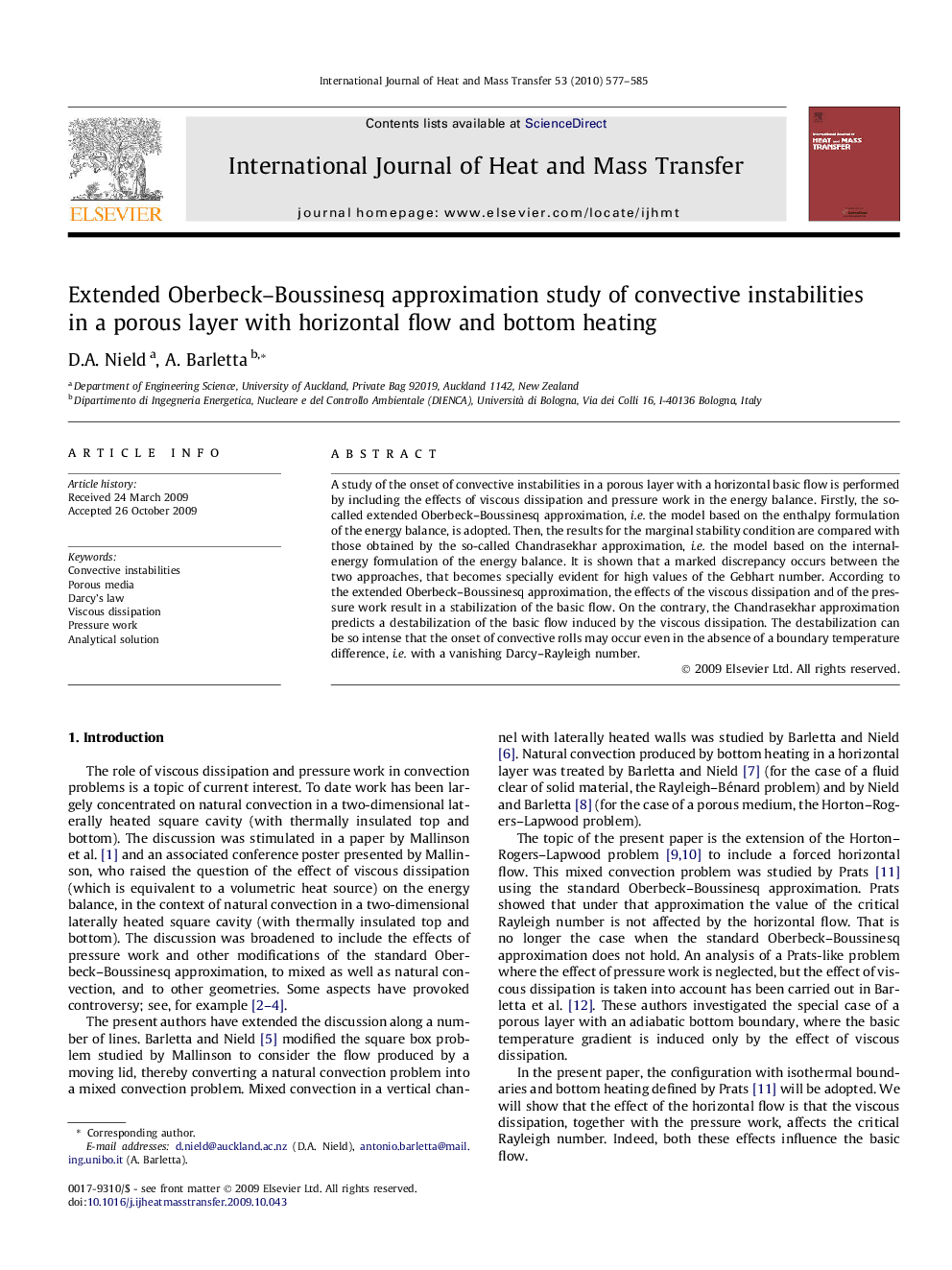| Article ID | Journal | Published Year | Pages | File Type |
|---|---|---|---|---|
| 661454 | International Journal of Heat and Mass Transfer | 2010 | 9 Pages |
A study of the onset of convective instabilities in a porous layer with a horizontal basic flow is performed by including the effects of viscous dissipation and pressure work in the energy balance. Firstly, the so-called extended Oberbeck–Boussinesq approximation, i.e. the model based on the enthalpy formulation of the energy balance, is adopted. Then, the results for the marginal stability condition are compared with those obtained by the so-called Chandrasekhar approximation, i.e. the model based on the internal-energy formulation of the energy balance. It is shown that a marked discrepancy occurs between the two approaches, that becomes specially evident for high values of the Gebhart number. According to the extended Oberbeck–Boussinesq approximation, the effects of the viscous dissipation and of the pressure work result in a stabilization of the basic flow. On the contrary, the Chandrasekhar approximation predicts a destabilization of the basic flow induced by the viscous dissipation. The destabilization can be so intense that the onset of convective rolls may occur even in the absence of a boundary temperature difference, i.e. with a vanishing Darcy–Rayleigh number.
